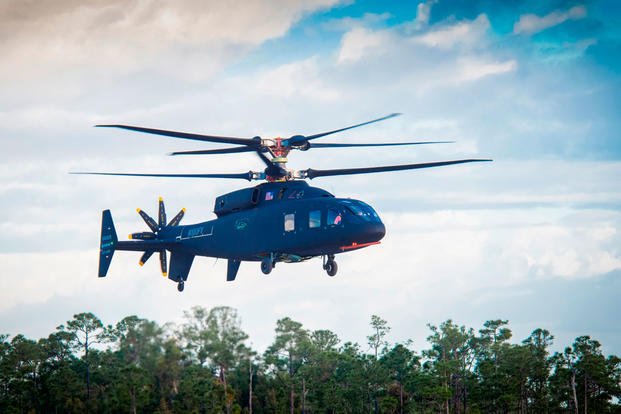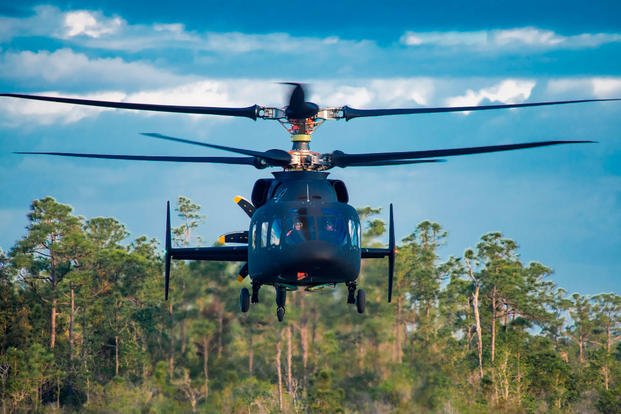After just over a year of delays, the Sikorsky-Boeing SB>1 Defiant helicopter has completed its first test flight, a key milestone in the Army's future vertical lift effort.
The futuristic aircraft, which features two coaxial main rotors, flew at Sikorsky's West Palm Beach, Florida site Thursday, according to a Boeing news release.
"The design and development of Defiant has revealed the capability advancement that is truly possible for future vertical lift," said David Koopersmith, vice president and general manager for Boeing Vertical Lift, in the release.
"Clearly, the performance, speed and agility of Defiant will be a game-changer on the battlefield, and we look forward to demonstrating for the U.S. Army the tremendous capabilities of this aircraft."
The Army awarded one of two contracts in 2014 to Sikorsky -- part of Lockheed Martin Corp. -- and Boeing Co. to build the Defiant for the Joint Multi-Role Technology Demonstrator program to produce technology needed for the future vertical lift effort.
A Textron Inc.-Bell team landed the second contract and built the tilt-rotor V-280 Valor, which completed its first test flight in December 2017.
The Defiant was scheduled to conduct its first test flight in 2017, but technical challenges forced Sikorsky-Boeing officials to delay until late 2018, followed by a second delay announced in December.
Army leaders hope that the technology demonstrator effort will produce advanced technology needed for FVL aircraft such as the Future Long-Range Assault Aircraft.
The FVL effort is also expected to produce an Advanced Unmanned Aerial System or AUAS, and a Future Attack Reconnaissance Aircraft, or FARA, which will work as a team to penetrate gaps in enemy air-defense systems.
Based on Sikorsky's X2 design, the Defiant is intended to allow the Army to penetrate from strategic standoff and exploit gaps created in complex anti-access area denial systems used by potential, near-peer adversaries such as Russia and China, according to the release.
"Defiant is designed to fly at nearly twice the speed and has twice the range of conventional helicopters while retaining the very best, if not better, low-speed and hover performance of conventional helicopters," Dan Spoor, vice president of Sikorsky Future Vertical Lift, said in the release.
"This design provides for exceptional performance in the objective area, where potential enemy activity places a premium on maneuverability, survivability and flexibility. We are thrilled with the results of today's flight and look forward to an exciting flight test program."
-- Matthew Cox can be reached at matthew.cox@military.com.











